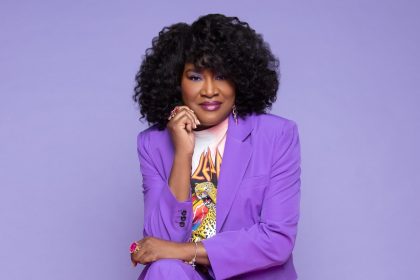In the face of a breast cancer diagnosis, women grapple with life-altering decisions. Among these, the choice to undergo a bilateral breast mastectomy – the surgical removal of both breasts – stands out as a particularly profound step. This procedure, while daunting, offers significant benefits that extend beyond physical health to emotional well-being.
Here, we delve into the five primary reasons women opt for bilateral breast mastectomies, shedding light on the complex considerations behind these courageous choices.
Recurrence risk reduction
For women diagnosed with breast cancer, the specter of recurrence looms large. The fear of cancer returning, either in the treated breast or the other, can be all-consuming. A bilateral mastectomy significantly lowers this risk by removing most breast tissue, leaving little opportunity for cancer cells to reemerge.
Women with genetic mutations like BRCA1 or BRCA2 face an even higher risk of developing breast cancer. For them, a bilateral mastectomy serves as a proactive measure to dramatically reduce future risk. This decision offers a sense of control over their health destiny, alleviating the constant worry of cancer’s return.
The choice to remove both breasts isn’t just about addressing the present – it’s a strategic move to safeguard the future. For many, the peace of mind this brings is invaluable.
Genetic predisposition
Genetic testing has revolutionized breast cancer prevention. Women who test positive for mutations in genes like BRCA1 and BRCA2 face a stark reality: their lifetime risk of developing breast cancer can be as high as 70%. For these women, a bilateral mastectomy isn’t just an option – it’s often a strong medical recommendation.
The decision is driven by compelling statistics. By removing both breasts before cancer has a chance to develop, women can slash their risk dramatically. This preventive strategy transforms a frightening genetic predisposition into an opportunity for proactive health management.
Family history adds another layer to this decision. Women who’ve watched close relatives battle breast cancer often feel an urgent need to reduce their own risk. Choosing a bilateral mastectomy becomes an act of empowerment, a way to take charge of their health narrative before cancer has a chance to write the first chapter.
Reconstructive symmetry
Reconstructive surgery plays a crucial role in the healing journey after a mastectomy. For women who undergo a unilateral mastectomy (removal of one breast), achieving symmetry through reconstruction can be challenging. Matching a reconstructed breast to a natural one often requires multiple surgeries, and even then, perfect symmetry may remain elusive.
Opting for a bilateral mastectomy allows for reconstruction of both breasts, typically resulting in a more balanced, symmetrical appearance. This choice can significantly impact a woman’s body image and confidence post-surgery.
The ability to regain control over one’s appearance following a cancer diagnosis can be a powerful part of emotional recovery. Knowing they have the option to reconstruct both breasts in a harmonious way offers many women a much-needed psychological boost during a difficult time.
Peace of mind
Living under the shadow of potential cancer recurrence exacts a heavy emotional toll. For many women, choosing a bilateral mastectomy stems from a deep-seated desire for peace of mind. Removing both breasts can offer a significant reduction in cancer risk, allowing women to move forward without the weight of constant uncertainty.
This decision often enables women to refocus on overall health and wellness, free from the anxiety of cancer lurking in the background. The proactive nature of a bilateral mastectomy can feel empowering, offering a sense of control over an unpredictable situation.
Additionally, the reduction in ongoing screenings and tests appeals to many. Without the need for frequent mammograms or the stress of awaiting biopsy results, women can return to their lives with fewer medical interruptions. For many, this freedom from constant vigilance makes the decision worthwhile.
Personal empowerment
At its core, the decision to choose a bilateral mastectomy is deeply personal, rooted in the need to feel safe and in control. Even for women not genetically predisposed to breast cancer or at high risk of recurrence, the choice can be clear. It’s about eliminating potential future threats, reclaiming health, and moving forward with confidence.
Emotionally, this decision can alleviate the fear of cancer’s return. Physically, it allows women to take action before cancer has a chance to develop or spread. Every woman’s journey is unique, and what works for one may not be right for another. However, for many, the peace of mind that comes from such a decisive step outweighs the challenges they face.
Understanding the impact of breast cancer on their bodies and lives, these women choose a solution that enables them to live without fear, regain confidence, and focus on the future.
Charting a course of strength and resilience
A bilateral breast mastectomy represents a decision rooted in strength, resilience, and an unwavering desire to take control of one’s health. Whether driven by the need to reduce recurrence risk, address genetic factors, or achieve reconstructive symmetry, each woman’s choice is profoundly personal and influenced by her unique circumstances.
While undoubtedly life-altering, for many women, this procedure provides a sense of empowerment and peace. By taking control of their future, these women are not just fighting cancer – they’re reclaiming their lives with determination, hope, and the belief that they are more than their diagnosis.
In the end, choosing a bilateral mastectomy transcends the realm of medical procedures. It’s a bold choice to prioritize life, health, and happiness in the face of adversity.
This story was created using AI technology.















